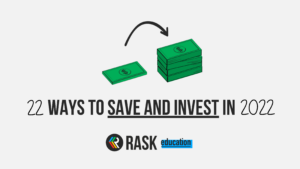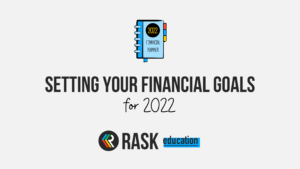This article explains what a Holder Identification Number (HIN) is and when you’re issued one, along with what a custodian is and how that investment structure works.
If you’ve ever purchased a share, ETF, REIT or bond in Australia, chances are you have some sort of brokerage or investment account (even if someone made the transaction on your behalf). One of the big things that I really believe all investors should, at minimum, be aware of is whether their investments are held under their own HIN or under a custodian investment structure.
Holder Identification Number (HIN)
Do you know what a HIN is?
Want a hin(t)?
A HIN is a number issued to you by our investment marketplace, the Australian Securities Exchange (ASX), more specifically through their backend clearing house (CHESS). When you open a brokerage account in Australia, in most cases you’ll be issued with a HIN (although some brokers use a custodial model – but we’ll get to that).
Whenever you buy any investments through that broker, they’ll be recorded against your unique HIN, which gives you an extra layer of protection if your broker ever fails and goes into liquidation. Having a HIN also makes it easy to transfer your holdings between brokers.
Generally, I’m a big supporter of having your investments held under your own HIN, but there are some challenges with this model… which leads me to custodians.
What is an investment custodian?
Many micro-investing apps in Australia, along with some low-cost brokers and investment wrap products, use a custodial model for your investments. This means that instead of getting your own HIN, the investment manager uses a custodian that has one “mega” HIN, with every client’s investments held under it. The custodian then keeps records on their end (they may use an external administrator to help with this), holding your investments under their “mega” HIN.
The advantage of this model is that investment platforms can offer a cheaper and more efficient way to invest on behalf of a large pool of clients, as they can place large trades and disperse the brokerage cost across many clients.
The downside of this model is that you have less direct control over your investments (think voting, dividend reinvestment plans and changing brokers).
Plus, it’s much more difficult to access your holdings if your investment platform were to fail and go into liquidation. Because your holdings aren’t registered against a unique HIN, the liquidators will have to go through all the records to identify exactly who owns each holding. That’s not to say you’ll lose your investments, but it may take a few months to gain access to your funds.
I wouldn’t let that stop you from using a custodial-based platform, but it’s important to be aware of the structure a broker is using, and the protections you have as a consumer.
These details can usually be found in the Product Disclosure Statement (PDS) or by asking the company directly.
How can you identify if you have a HIN or a custodian?
The first way to check is by just asking the company (or by hunting in their FAQs or PDS), to find out whether you will be issued with an individual HIN when you open an account.
If they say YES – wait to receive your individual HIN from the ASX (CHESS) via post or email.
If they say NO (or some variation of “we use a custodial service”, “you’re the beneficial owner” or “we use an external manager”) – then the company may be using a custodial model.
I would then hunt through the PDS (control + F is your friend here) or ask the company to find the answer to the following questions:
- Where will my assets be held? Are my holdings beneficially held or do I receive units in a fund?
- Do you use an external custodian and who is it?
- Do you use an external administrator and who is it?
- What would happen in the event your company goes under?
In the event of something happening to one of these companies, they may be able to appoint a new manager or liquidate your holdings, so it’s a good idea to know who’s involved.
And the final question that you should be asking regardless of whether the investment platform uses a HIN or custodial model: Are you registered to provide financial services in Australia (aka do you have an AFSL)?
Spending a few minutes doing some research before you dive in may save you a massive headache down the track!



